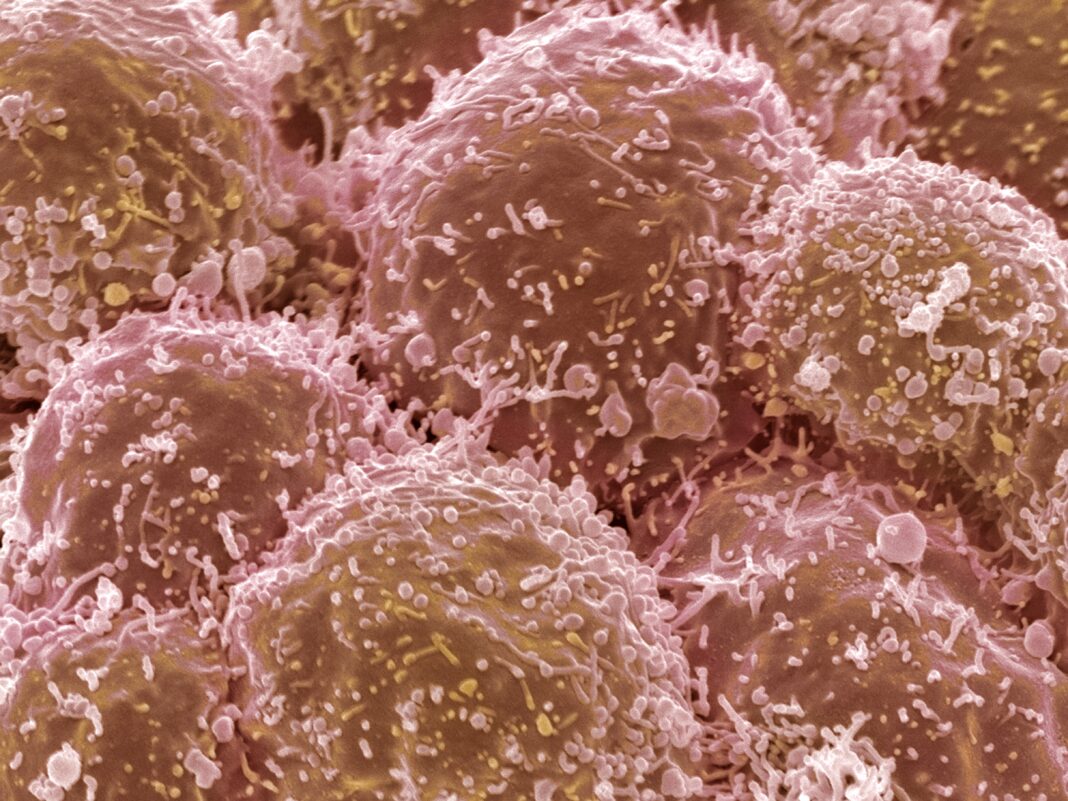Researchers at the Wake Forest School of Medicine, part of Wake Forest Baptist Health, say they have identified a set of new genetic biomarkers that could potentially lead to new personalized treatments for lung cancer. Their study “Recruitment of KMT2C/MLL3 to DNA damage sites mediates DNA damage responses and regulates PARP inhibitor sensitivity in cancer” appears online in Cancer Research.
“When recruited to promoters, histone 3 lysine 4 (H3K4) methyltransferases KMT2 (KMT2A-D) activate transcription by opening chromatin through H3K4 methylation. Here we report that KMT2 mutations occur frequently in non-small cell lung cancer (NSCLC) and are associated with high mutation loads and poor survival,” write the investigators.
“KMT2C regulated DNA damage responses (DDR) through direct recruitment to DNA damage sites by Ago2 and small noncoding DNA damage response RNA, where it mediates H3K4 methylation, chromatin relaxation, secondary recruitment of DDR factors, and amplification of DDR signals along chromatin.
“Furthermore, by disrupting homologous recombination (HR)-mediated DNA repair, KMT2C/D mutations sensitized NSCLC to Poly(ADP-Ribose) Polymerase inhibitors (PARPi), whose efficacy is unclear in NSCLC due to low BRCA1/2 mutation rates. These results demonstrate a novel, transcription-independent role of KMT2C in DDR and identify high-frequency KMT2C/D mutations as much-needed biomarkers for PARPi therapies in NSCLC and other cancers with infrequent BRCA1/2 mutations.”
This work was built on a previous discovery by the precision oncology team at Wake Forest Baptist’s Comprehensive Cancer Center, directed by Wei Zhang, PhD, professor of cancer biology at Wake Forest School of Medicine and a co-corresponding author of this study. Using DNA sequencing technologies, Zhang’s team found that tumors with mutated KMT2 genes, a family of proteins, exhibit a feature of genetic instability with numerous mutations in the genome.
“These findings suggest that KMT2 genes may be required for the repair of DNA damages caused by carcinogen exposure such as excess tobacco smoking. We speculate that tumor cells containing mutations in KMT2 genes are unable to repair these DNA damages, causing accumulation of mutations in the genome,” said Peiqing Sun, PhD, co-corresponding author of the study and professor of cancer biology at the School of Medicine.
In the current study, the researchers found that KMT2C, a member of the KMT2 family of proteins, is capable of regulating DNA damage responses and DNA damage repair. It directly binds to DNA damage sites, where it mediates methylation of histones. This histone modification process relaxes the chromosome structure in the vicinity of the damaged DNA, which in turn, makes room for other key proteins needed for repairing damaged DNAs.
These findings reveal a novel mechanism for the repair of damaged DNA, according to Sun, who points out that this study also provides a basis for potential new personalized treatments for lung cancer, note the researchers. They found that mutations in KMT2C and KMT2D (other members of the KMT2 family) make non-small cell lung cancer more sensitive to Poly (ADP-ribose) polymerase (PARP) inhibitors, which are already approved for treating prostate, pancreatic, ovarian, and breast cancer patients whose tumors have mutations in BRCA1 and BRCA2 genes, which are also known to be essential for the repair of DNA damages.
BRCA1 and BRCA2 mutations occur at relatively low frequencies in lung cancer. Researchers in this study suggest that mutations of KMT2C and KMT2D may play a similar role as BRCA1 and BRCA2 mutations as an indicator for improved response to PARP inhibitors.
“In our study, we demonstrated a novel role of KMT2C in DNA damage responses and identified KMT2C and KMT2D mutations as the much-needed biomarkers that could guide PARP inhibitor therapies for non-small cell lung cancer,” explained Sun, adding that further clinical studies are planned to test the efficacy of PARP inhibitors in lung cancer patients.



